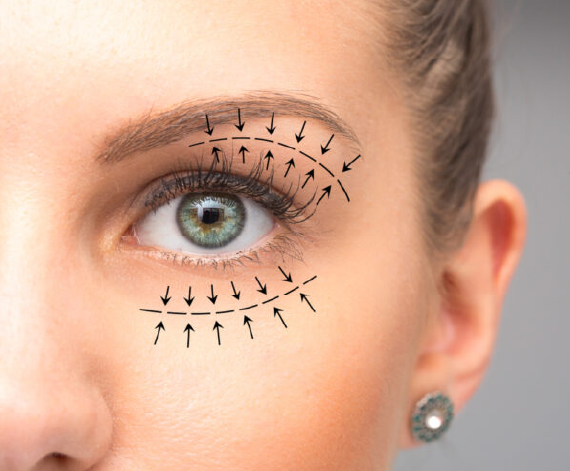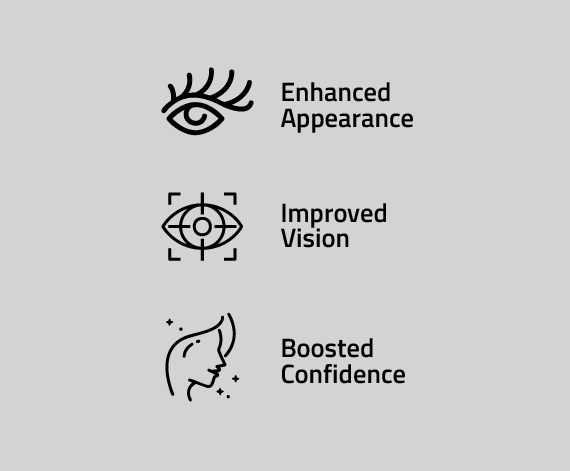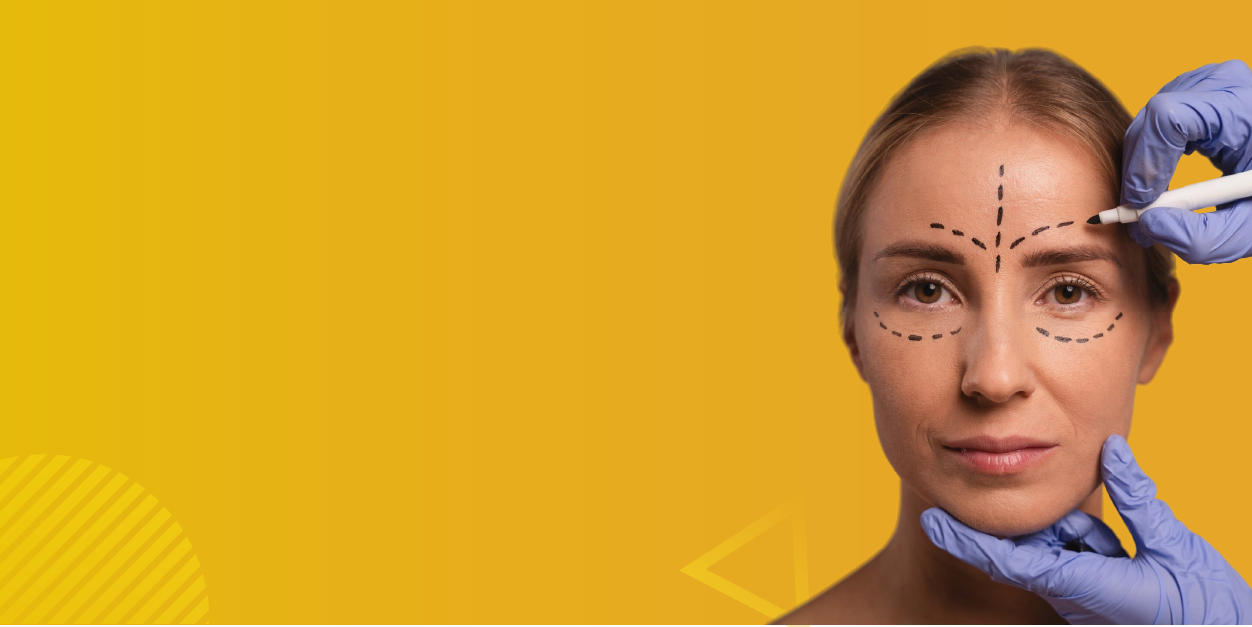Blepharoplasty, also known as eyelid surgery, is a cosmetic or functional procedure aimed at improving the appearance of the eyelids. It can be performed on the upper and/or lower eyelids to remove excess skin, fat, or muscle, addressing issues such as droopy eyelids, under-eye bags, and vision obstruction.
Common Reasons for Blepharoplasty
- Aging: The first signs of aging often appear around the eyes, causing sagging skin, puffiness, and wrinkles.
- Genetics: Some individuals inherit droopy eyelids or excess skin around the eyes from their family.
- Vision Obstruction: Excess skin on the upper eyelid can block vision, making surgery necessary for functional improvement.
- Aesthetic Enhancement: Many opt for blepharoplasty to achieve a youthful and refreshed appearance.

Types of Blepharoplasty
- Upper Eyelid Blepharoplasty – Removes excess skin and fat that may cause sagging or vision impairment.
- Lower Eyelid Blepharoplasty – Reduces puffiness and under-eye bags by removing or repositioning fat.
- Transconjunctival Blepharoplasty – A minimally invasive procedure that removes excess fat from the lower eyelid without external incisions.
Procedure Overview
- Anesthesia – Local anesthesia with sedation or general anesthesia is used to ensure patient comfort.
- Incision – A small incision is made in the natural crease of the upper eyelid or inside the lower eyelid.
- Tissue Removal or Repositioning – Excess skin, fat, and muscle are removed or repositioned to achieve a more youthful contour.
- Closure – Incisions are closed using fine sutures or staples, minimizing visible scarring.

Benefits of Blepharoplasty
- Enhanced Appearance – Rejuvenates and refreshes the look of the eyes.
- Improved Vision – Removing excess upper eyelid skin can restore the full range of sight.
- Boosted Confidence – Many individuals feel more confident and youthful after surgery.

Recovery & Post-Surgical Care
Timeline of Healing:
- First Week: Swelling, bruising, and mild discomfort (cold compresses can help reduce these symptoms).
- Two Weeks: Most bruising fades, and patients can return to normal activities.
- One Month+: Final results begin to become visible as swelling subsides.
- Three to Six Months: Full healing and refinement of surgical results.
- Use prescribed eye drops and medications to prevent infection and dryness.
- Avoid strenuous activities for at least two weeks.
- Sleep with the head elevated to minimize swelling.
- Follow-up visits with the surgeon to monitor healing.
Lower Eyelid Surgery Specifics
- Removes excess skin and fat pockets.
- Tightens and repositions the eyelid for a youthful appearance.
- Can be performed with fat removal or fat addition to correct hollowness.
Upper Eyelid Surgery Specifics
- Eliminates droopy, overhanging skin above the eyes.
- Enhances eyelid definition.
- Can be performed under local anesthesia.

Conclusion
Blepharoplasty is a safe and effective procedure for those looking to enhance their eye appearance or improve vision. With proper care and a skilled surgeon, the results can be long-lasting and significantly improve both aesthetics and functionality. For best results, consult with a board-certified plastic surgeon to determine the most suitable treatment plan for your needs.
Connect
@
Hair O Craft
Get in Touch

Let us help
Cosmetic surgery provides individuals with the opportunity to enhance their appearance, correct imperfections, and boost self-confidence. Each procedure is tailored to meet personal aesthetic goals, helping patients achieve a more harmonious and balanced look.


